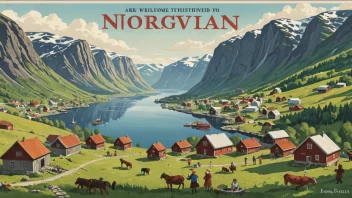Norwegian Sign Language (NSL) has a rich history and has evolved significantly over the years. Understanding its development can provide valuable insights into the culture and communication of the Deaf community in Norway. In this article, we will explore the key stages in the evolution of Norwegian Sign Language, highlighting its unique characteristics and how it has been influenced by various factors.
- Origins of Norwegian Sign Language
Norwegian Sign Language is believed to have originated in the early 19th century. The first formal school for the Deaf in Norway was established in 1807 by the Danish teacher Hans J. W. Henningsen. He introduced a form of sign language that combined local signs with elements from French Sign Language, which was prevalent in Europe at the time. This melding of languages laid the foundation for NSL as we know it today.
- Influence of Educational Institutions
Throughout the 19th and 20th centuries, various educational institutions played a crucial role in shaping NSL. The establishment of the Norwegian National Association of the Deaf in 1884 aimed to promote the rights and education of Deaf individuals. This period saw a standardization of signs taught in schools, leading to greater consistency in the use of NSL among Deaf individuals.
- Regional Variations
As NSL developed, regional variations began to emerge, influenced by local dialects and cultural factors. Variations can be found in different parts of Norway, with distinct signs and gestures that reflect the local community's identity. This diversity enriches the language and illustrates how NSL continues to evolve in response to its users.
- Recognition and Legal Status
In 2008, Norwegian Sign Language was officially recognized as a minority language in Norway. This recognition has led to increased visibility and support for the Deaf community, including the establishment of sign language interpreters in public services. Legal recognition has also encouraged the preservation and promotion of NSL, fostering a sense of pride among its users.
- Modern Developments and Technology
The advent of technology has brought new opportunities for the evolution of NSL. Social media, video platforms, and mobile applications have facilitated communication among Deaf individuals and increased the exposure of NSL to the hearing population. Online resources, such as dictionaries and educational videos, are contributing to the language's growth and accessibility.
In conclusion, the evolution of Norwegian Sign Language is a testament to the resilience and creativity of the Deaf community in Norway. From its origins in the early 19th century to its current status as a recognized minority language, NSL has adapted and transformed in various ways. Understanding its history helps foster appreciation for the language and its speakers, ensuring that it continues to thrive in the future.






